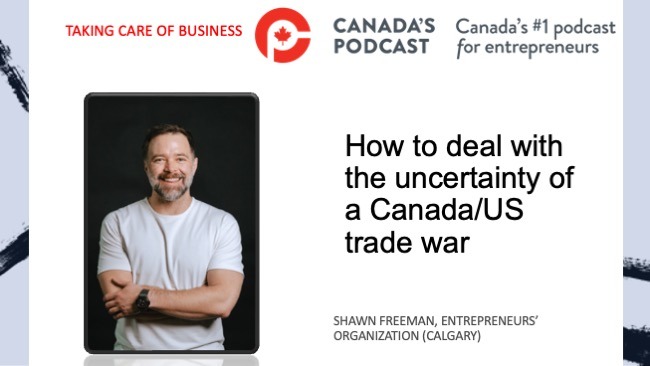Real gross domestic product (GDP) was essentially unchanged for a third consecutive month in October. Services-producing industries edged up 0.1%, while goods-producing industries were essentially unchanged, with the 20 industrial sectors evenly split between increases and decreases, reported Statistics Canada on Friday.
“Advance information indicates that real GDP by industry increased 0.1% in November. Increases in manufacturing, transportation and warehousing, and agriculture, forestry, fishing and hunting were partially offset by decreases in retail trade. Owing to its preliminary nature, this estimate will be updated on January 31, 2024, with the release of the official GDP by industry data for November 2023,” said the federal agency.

Statistics Canada
It said the manufacturing sector decreased for the fourth time in five months, contracting 0.6% in October, with declines for the month largely concentrated in durable goods manufacturing (-1.3%) as machinery manufacturing and transportation equipment manufacturing contributed the most to the decline. Non-durable goods manufacturing edged up 0.2% in October, representing a second consecutive increase.
“Wholesale trade contracted 0.7% in October, decreasing for the second consecutive month, as all but one subsector contracted in the month. Machinery, equipment and supplies wholesaling contributed the most to the decline with a 1.8% contraction as a result of companies completing shipments throughout the third quarter. Building material and supplies wholesaling (+3.7%) was the only subsector that expanded in October, up as a result of higher lumber and millwork wholesaling. This was the subsector’s third increase in four months as residential building construction (+1.2%) rose for a fourth consecutive month,” said StatsCan.
“Retail trade grew 1.2% in October, its largest growth rate since January 2023, with 9 of 12 subsectors contributing to the growth. Activity at clothing and clothing accessory stores (+3.2%) contributed the most to the growth, after two consecutive monthly declines. General merchandise stores (+2.5%) and health and personal care stores (+1.6%) were also large contributors to the increase in the month.”
The federal agency said mining, quarrying and oil and gas extraction increased 1.0% in October, following two consecutive monthly declines, as all three subsectors grew. Mining and quarrying (except oil and gas) expanded 2.4% in October, up for the third time in four months, as most mining industries posted gains.
“Oil and gas extraction rose 0.4% in October following a 1.9% contraction in September as some facilities resumed production after undergoing maintenance activity in September,” said the report.
“Oil and gas extraction (except oil sands) grew 3.0% in October, largely offsetting September’s decline, as both natural gas and crude petroleum extractions were up in October. Crude petroleum extraction bounced back following September’s decline as an oil platform off Canada’s North Atlantic coast resumed production following September’s maintenance. Oil sands extraction contracted 2.2% in October as turnarounds at some oil sands upgraders continued to impact the operations into the month.”
Nathan Janzen, Assistant Chief Economist , Royal Bank of Canada, said the flat October GDP print and early November estimate leaves output tracking little changed in Q4 as a whole, but with risks tilted to the downside of that given the earlier reported softening in hours worked and rising unemployment rate.
“And whether or not total GDP growth ends up as a small negative or small positive in Q4 as a whole, per-capita output will almost certainly post a sixth consecutive quarterly decline given still surging population growth. The BoC wants to be cautious about declaring victory over inflation too early, but softening economic growth and labour markets should boost confidence that price growth will continue to slow towards the central bank’s target range. Additional interest rate hikes are increasingly unlikely and we expect the BoC to pivot to interest rate cuts in Q2 of next year,” he said.
Marc Ercolao, Economist with TD Economics, said October’s GDP print ended up a little frosty against expectations that the economy would advance at a decent pace. With today’s print and guidance for November, fourth-quarter GDP is tracking sub-1.0% quarter-on-quarter annualized.
“This is roughly in line with our own expectations as well as that of the Bank of Canada (BoC). It’s safe to say that rate hike risk is virtually off of the table with markets now squarely focused on the timing of rate cuts. The BoC has firmly entered into a holding pattern as they receive evidence that growth is evolving in a manner consistent with reaching their 2% inflation target. We expect the BoC to still remain vigilant and not declare victory too early. But all said, the Bank should feel a sense of comfort heading into the new year,” he said.

Mario Toneguzzi
Mario Toneguzzi is Managing Editor of Canada’s Podcast. He has more than 40 years of experience as a daily newspaper writer, columnist, and editor. He was named in 2021 as one of the Top 10 Business Journalists in the World by PR News – the only Canadian to make the list
About Us
Canada’s Podcast is the number one podcast in Canada for entrepreneurs and business owners. Established in 2016, the podcast network has interviewed over 600 Canadian entrepreneurs from coast-to-coast.
With hosts in each province, entrepreneurs have a local and national format to tell their stories, talk about their journey and provide inspiration for anyone starting their entrepreneurial journey and well- established founders.
The commitment to a grass roots approach has built a loyal audience on all our social channels and YouTube – 500,000+ lifetime YouTube views, 200,000 + audio downloads, 35,000 + average monthly social impressions, 10,000 + engaged social followers and 35,000 newsletter subscribers. Canada’s Podcast is proud to provide a local, national and international presence for Canadian entrepreneurs to build their brand and tell their story.





